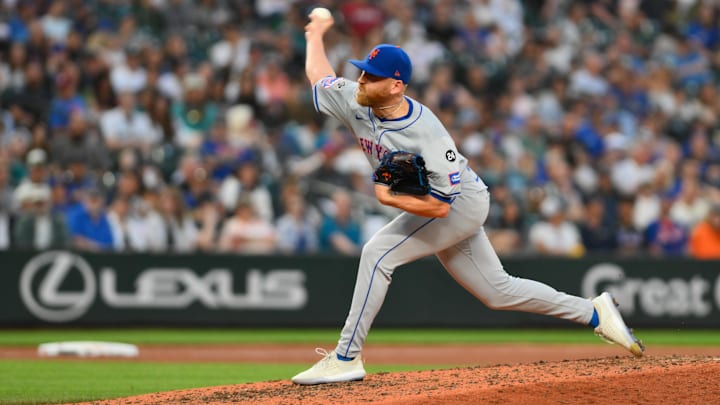What Is The Mets' Biggest Weakness?

No matter how good a team is, there is always room for improvement.
This is no different for the New York Mets, who have surged into the Wild Card race and trail the Atlanta Braves by just a half a game for the last spot. The team is on a six-game winning streak and have won eight of their last 10 games.
But making the playoffs is only part of the equation; if the Mets end up playing in October, they'd love to make a deep run. If they want to win their first NL flag since 2015 and their first World Series in 28 years, there is an area that they need to shore up.
According to Bleacher Report's Zachary D. Rymer, who listed the biggest weakness of every major league organization, the Mets' Achilles heel is their tendency to walk opposing batters.
"The Mets need to solve their walk problem. They lead all NL teams in bases on balls across the last two seasons," Rymer wrote. "And when they've walked three or more batters in a game this season, they have a .500 record at 49-49."
New York's pitching has dealt with consistency issues this year, and their habit of issuing free passes is a major reason why. Among the 20 Mets pitchers who have pitched in at least 10 games for them this season, half of them have walk rates over 10%, while pitchers like David Peterson, Tylor Megill, and Edwin Diaz are over 9%; Jake Diekman pitched his way off the team due to an atrocious 16.6 walk percentage, while deadline acquisition Huascar Brazoban was sent down to the Triple-A Syracuse Mets due to a 15.1% walk rate. Even Jose Butto has walked 13.7% of the batters he's faced, which is likely why he was moved to the bullpen after originally being used as a starting pitcher.
There are notable outliers to this trend, though. Sean Manaea and Luis Severino have walk rates of 8.8% and 8.1%, respectively, which is especially important due to their roles as the top two starters. Relievers Phil Maton and Dedniel Nunez have walked only 6.5% and 5.9% of the batters they've faced, respectively, and are two of the most dependable pitchers on the team as a result; there is even an argument for Maton to become the team's closer down the stretch. Nonetheless, the Mets have a team walk rate of 9.8%, which certainly correlates to the 613 runs they've allowed; if not for a deadly lineup that has scored 662 runs, New York wouldn't be in the position they are right now.
The Mets have a legitimate shot at making the postseason, but if they want to succeed in an environment where every flaw is magnified, their pitchers need to do a much better job at throwing strikes.
